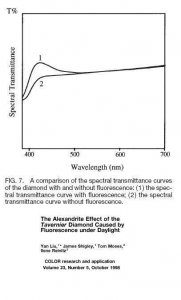- Joined
- Sep 3, 2000
- Messages
- 6,696
If there is poor clarity, cloudiness or fluorescence these folks are going to "predict" light performance will not be different, but intend to put this lack of performance under clarity grading. Incredible! Here the consumer finds an "excellent" cut and thinks, "Sell, it isn''t a fabulous clarity, but it has a wonderful light performance.". Boy, they may well be surprised!
If a diamond has poor light behavior, then how can that component grade Excellent when it is obvious to any grader that this isn''t the case. How is good communication of the diamond''s appearance to be transmitted to end users or other dealers?
The jury is certainly not done deliberation on this hot topic. The GIA Symposium ws full of differing opinions and vbery thougtful people. Most of these people are dedicated to bringing honesty to the diamond trade. There is a very powerful, traditional minority that prefers the old smoke and mirrors stuff. This will change over time, but it won''t totally go away any time soon.
Using an expert is still going to be the right path for consumers who want assurance a particular diamond is right for them. I will say that the creation of cut grading systems by the major players is coming along, but there are plenty of knowledgeable people who are less than thrilled with what is now being offered. You take the good with the bad as things change.
If a diamond has poor light behavior, then how can that component grade Excellent when it is obvious to any grader that this isn''t the case. How is good communication of the diamond''s appearance to be transmitted to end users or other dealers?
The jury is certainly not done deliberation on this hot topic. The GIA Symposium ws full of differing opinions and vbery thougtful people. Most of these people are dedicated to bringing honesty to the diamond trade. There is a very powerful, traditional minority that prefers the old smoke and mirrors stuff. This will change over time, but it won''t totally go away any time soon.
Using an expert is still going to be the right path for consumers who want assurance a particular diamond is right for them. I will say that the creation of cut grading systems by the major players is coming along, but there are plenty of knowledgeable people who are less than thrilled with what is now being offered. You take the good with the bad as things change.






300x240.png)